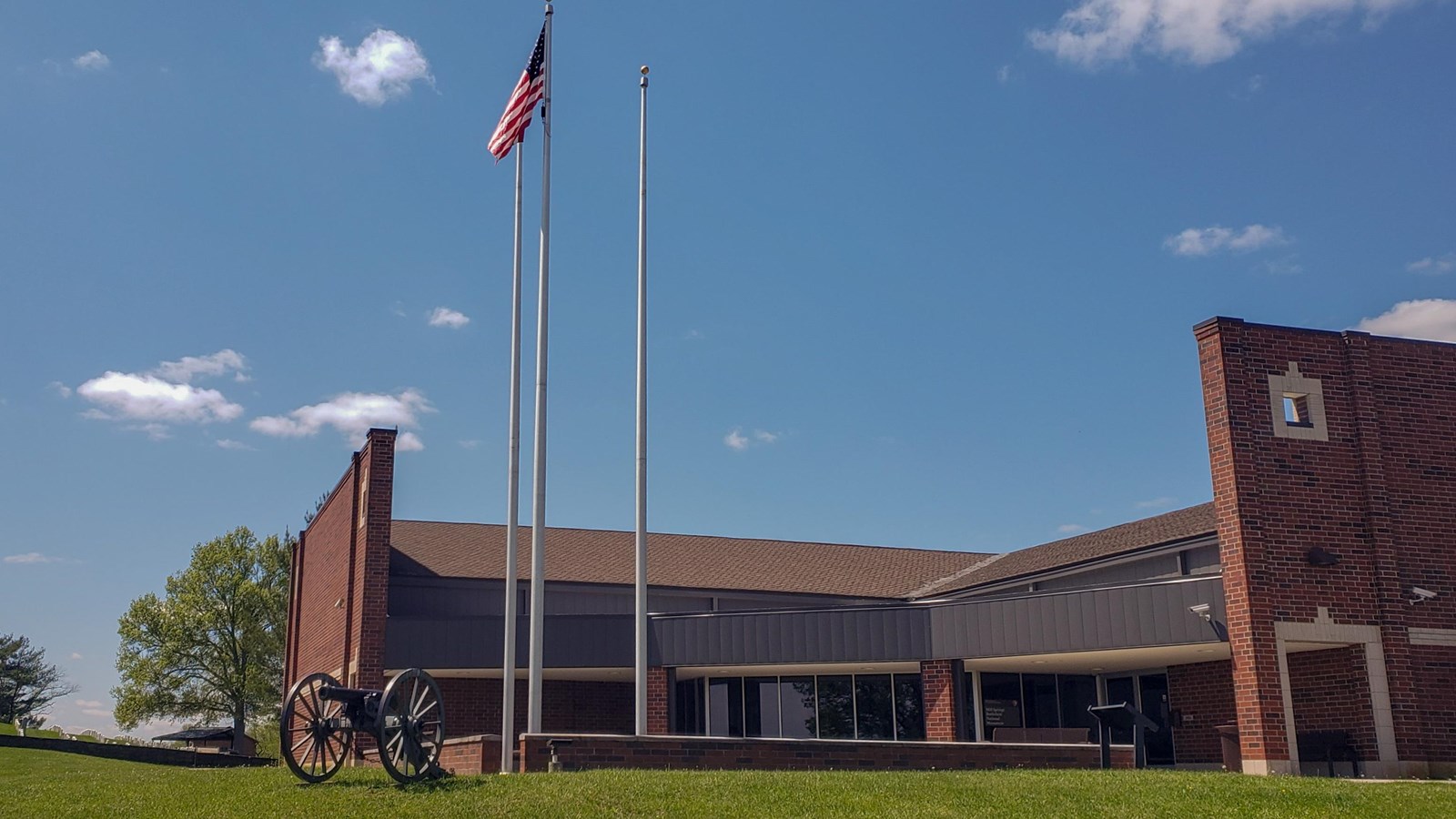Last updated: April 21, 2024
Place
Tour Stop #1: Park Visitor Center and National Cemetery

NPS
Accessible Rooms, Accessible Sites, Automated External Defibrillator (AED), Benches/Seating, Cellular Signal, Fire Extinguisher, First Aid Kit Available, Historical/Interpretive Information/Exhibits, Information, Information - Maps Available, Information - Ranger/Staff Member Present, Junior Ranger Activity, Junior Ranger Booklet Available, Restroom, Restroom - Accessible, Water - Bottle-Filling Station, Water - Drinking/Potable
The Mill Springs Battlefield National Monument Visitor Center building was built in 2006 by the Mill Springs Battlefield Association and was donated to the National Park Service when the site became a National Monument in 2020. Inside the Visitor Center you can find bathroom facilities, water fountains, a community room where a 20 minute film about the battle is shown, and the museum with information and artifacts from the battle.
Mill Springs National Cemetery was established in 1867, originally under the name of Logan's Crossroads National Cemetery, after William H. and Nancy S. Logan donated additional land to the government for its establishment.
